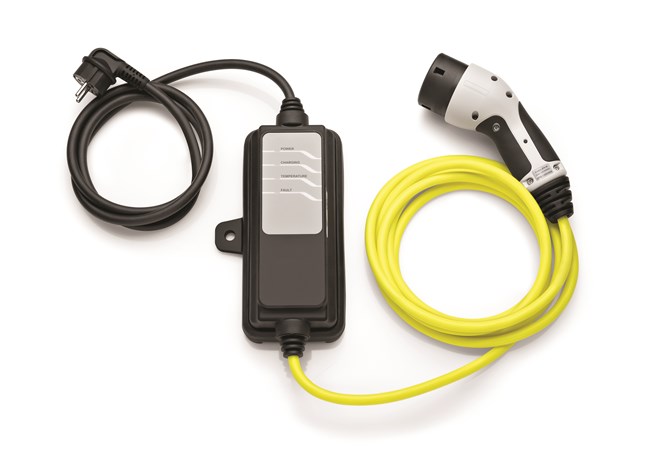- 'Luxury' tax on expensive pick-up trucks suggested
- ADVERTISEMENT FEATURE: Essential advice to avoid the van fleet ICE-berg
- ETRUX launches new Ford E-Transit Trizone
- Renault gives UK debut to Master E-Tech at CV Show
- Isuzu D-Max long-term test – Latest Report
- Isuzu D-Max V-Cross Steel Edition revealed
- IVOTY Report: Stellantis explores the hydrogen proposition
- New Maxus EVs include eDeliver 5 van
- Used LCV values reach six-month high
- ADVERTISEMENT FEATURE: IVECO Daily Mission Awards 2024 Q2 Round-up: Grounds Maintenance & Forestry
BVRLA report highlights electric van infrastructure and TCO concerns
Date: Monday, September 26, 2022 | Author: Sean Keywood

Electrifying vans fleets are battling inadequate charging infrastructure, and also a narrowing total cost of ownership advantage compared with diesel models.
That’s according to the BVRLA, which has published its latest Road to Zero Report Card for 2022.
The report offers an assessment of different aspects of fleet electrification, and a rating, with the best being Cruising, then running down through Accelerating and Brakes On to the worst rating, Parked.
Overall, across all fleet types, progress on the road to zero is rated as Accelerating, an improvement on the Brakes On given last year.
However, the report also gives separate ratings for van, car, and HGV fleets for the key areas of demand, supply, and infrastructure, and while demand for vans is listed as Cruising, and supply as Accelerating, infrastructure is rated as Parked.
The report states that concerns over vehicle downtime and inaccessible chargepoints are not being addressed, and that van needs must be considered at the design and deployment stages of future infrastructure.
Speaking during a webinar held to accompany the publication of the report card, BVRLA senior policy adviser Catherine Bowen said: “There is growing fleet concern about whether [chargepoints] are arriving in sufficient numbers, and also whether they are fit for purpose.
“We have heard time and time again about issues with accessibility for commercial vehicles, and it’s also an area where we are seeing local authorities take on more and more responsibility, and we want to ensure that they are engaging with fleets at the earliest part of that process, and that we can ensure we have robust infrastructure that is able to cater for all users and vehicle types.”
Commenting with the release of the report, BVRLA chief executive Gerry Keaney said: “Electric vehicles are in high demand. Fleets remain committed to bringing cleaner, greener vehicles to UK roads and are delivering ambitious strategies to make it happen.
““Investment in charging infrastructure is not simply a numbers game. More consideration needs to be given to the needs of all road users.
“Fleet operators are ready to lead the charge but are being left with one hand tied behind their back. The government is beginning to listen to these concerns and we will continue to push the issue until authorities across the country are building infrastructure strategies that fully meet fleet needs.”
The report also highlights how the rising cost of electricity, together with the high upfront cost of electric models, is causing running cost advantages of electric models versus their diesel counterparts to erode.
Although the report states that the wide variety of van use cases makes it difficult to give exact figures for this, Openreach senior manager for sustainability Andrew Kirkby, speaking on the webinar, said that in some cases electric vans were now more expensive to run than diesels, and that this may lead to a slowing of his fleet’s electrification process.
He said: “We [at Openreach] are still committed to our 2030 decarbonisation target for our fleet. I do feel that with the recent changes that we’ve seen in terms of the cost of living, the rising cost of electricity, which is obviously affecting the fuelling of alternative fuel vehicles, as well as changes for example the government capping of [plug-in van] grants at 1,000 units per year, we may see a slowdown in the pace.
“This is mainly being driven by our business case. The TCOs have been affected by these changes. One of the biggest drivers for electric vehicles were the fuelling costs of EV versus diesel, and with the rising cost of electricity that’s now on a par with diesel and in some cases actually more expensive.”
Kirkby was however more positive when asked about the availability of suitable electric van models.
He said: “It has absolutely been an improving picture with commercial vehicles. We have seen some models come to market in the last 12 months.
“Generally, we are an engineering fleet, so on payload and range are definitely our biggest concerns and you do tend to take that hit on payload when you move to an alternatively fuelled vehicle. There are some provisions in place like the 4.25t O licence exemption, which does help, but then you’ve got the increased cost of that vehicle, because you are paying for that bigger battery.
“Still today, when we compare EV directly with ICE, there’s a lot more range in that ICE area for doing the same job at a cheaper cost, so what we are still looking for is more alternatively-fuelled vehicles to come to market.”
View The WhatVan Digital Edition


